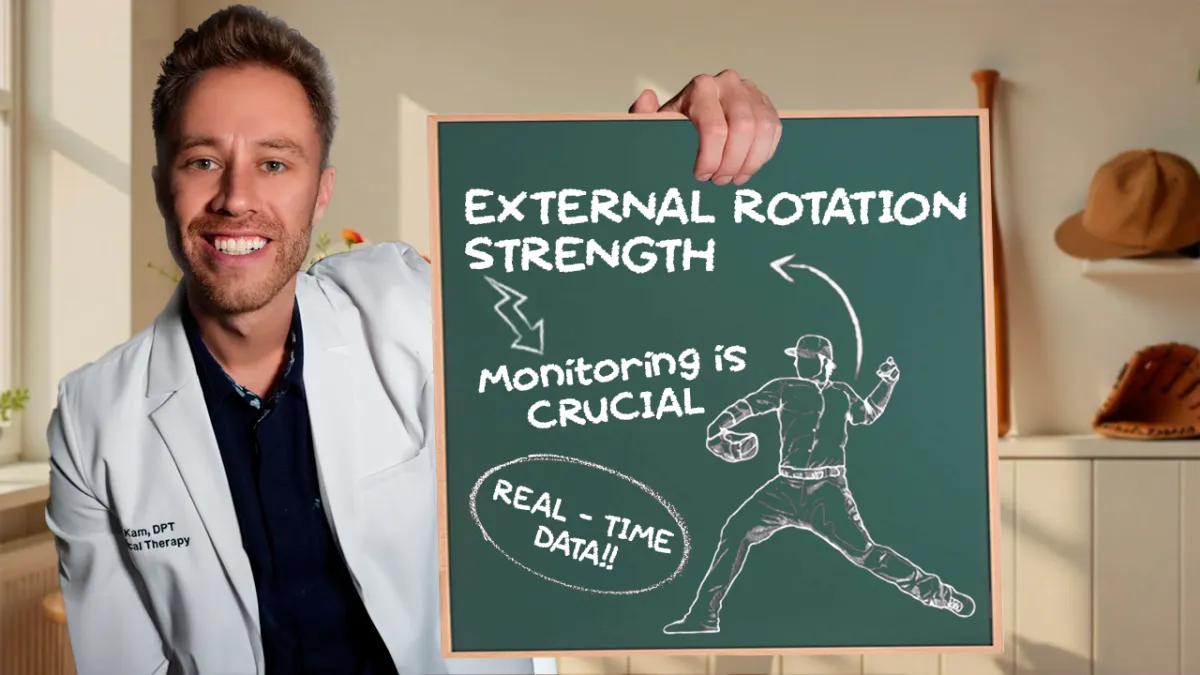
How Pitchers Should Monitor Their Shoulder
Why Shoulder Monitoring Matters for Baseball Pitchers
Shoulder injuries can sneak up on even the most talented pitchers.
By the time pain shows up, the damage might already be done.
This is why monitoring your shoulder as a baseball pitcher isn’t optional—it’s essential.
I’m Dr. Kam, a double fellowship-trained sports physical therapist.
I work with high-level baseball athletes every day to help them stay healthy and throw hard.
In this article, I’ll show you how tracking shoulder health helped one minor leaguer stay on the mound and reach new velocity peaks.
Shoulder Monitoring Helped Ethan Stay Injury-Free
Ethan was a rising prospect with a fastball on the rise—so was his injury risk.
As his velocity improved, his shoulder faced more stress.
That’s when we started a regular shoulder strength and mobility monitoring program.
We used the VALD ForceFrame to measure external rotation strength.
We paired that with the DynaMo Plus for range of motion assessments.
These tests gave us hard data about how his arm was adapting to the load.
The Importance of Tracking Strength and Mobility Trends
Ethan’s shoulder was tested every other week.
That may sound like a lot—but subtle changes can be red flags.
A 22% drop in external rotation strength after games isn’t just data—it’s danger.
By watching these trends, we caught early signs of overuse.
Instead of waiting for pain, we adjusted his training plan ahead of time.
This meant more efficient recovery and better on-field performance.
Fatigue Monitoring Also Played a Key Role
Shoulder strength wasn’t the only thing we watched.
We also ran regular countermovement jump tests to assess full-body fatigue.
Why? A tired lower half often leads to dangerous compensation up top.
By checking both upper and lower body performance,
we kept Ethan’s mechanics sound and his risk low.
The result? He hit new fastball speeds—safely.
Early Monitoring Prevents Late-Season Disasters
Too often, players wait until they feel pain to act.
But by then, it's often too late to avoid downtime.
Monitoring gave Ethan the edge—and a healthy season.
If you’re serious about baseball, you can’t afford to guess.
Regular shoulder testing helps you adjust your workload,
protect your arm, and get the most out of every pitch.
What’s the Takeaway for Baseball Pitchers?
Should I be monitoring my shoulder as a pitcher?
Absolutely—and the earlier you start, the better.
Monitoring helped Ethan catch risks before they became injuries.
It gave his team real-time insights to train smarter and throw harder.
If you're a pitcher (or coach or parent), we help athletes just like you.
I'm Dr. Kam—Board-Certified, double-fellowship trained, and trusted by baseball players across all levels.
Next step?
Watch my latest video on shoulder monitoring and injury prevention for baseball pitchers.
How Pitchers Should Monitor Their Shoulder
Interested in elevating your game? Check out our other articles on effective pitching strategies, or contact me directly to tailor a program that’s right for you:
